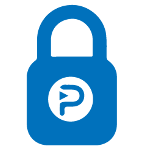Les Passwords Manager mobiles : nombreuses faiblesses de sécurité
Les Gestionnaires de Mots de Passe, aussi appelés Coffre-fort à Mots de passe sont très en vogue et de plus en plus adoptés au sein des entreprises et par des particuliers. Des solutions applicatives on-premise telles que KeePass, SaaS avec 1Password ou LastPass, mais aussi des solutions web opensource comme TeamPass permettent de sécuriser, et séquestrer tous vos sésames en les protégeant par un master password.
Bien évidemment, ces solutions sont compatibles cross-plateformes (Windows, Mac Linux) et ont également été portées sur les environnements mobiles tels que Android ou iOS.
Fin février 2017, une étude / analyse de la sécurité de 9 applications Password Manager sur Android est sortie, indiquant qu’un grand nombre de vulnérabilités existait sur ces solutions.
There are different policies for the generation of secure passwords. However, one of the biggest challenges is to memorize all these complex passwords. Password manager applications are a promising way of storing all sensitive passwords cryptographically secure. Accessing these passwords is only possible if the user enters a secret master password. At first sight, the requirements for a password manager application seem simple: Storing the passwords of a user centralized in a secure and confidential way. However, how is the reality on mobile, password manger applications, especially on Android? Applications vendors advertise their password manager applications as “bank-level” or “military-grade” secure. However, can users be sure that their secrets are actually stored securely? Despite the vendors’ claims, is it nevertheless possible to obtain access to the stored credentials?
Team-Sik, une équipe de chercheurs basée à Fraunhofer Institute for Secure Information Technology in Darmstadt en Allemagne s’est intéressée aux 9 password manager les plus téléchargés sur le PlayStore d’Android, et les résultats sont plutôt inquiétants…
Parmi l’ensemble des résultats et faiblesses de sécurité identifiées, on note plusieurs points communs entre certaines de ces applications :
- La gestion des données privées par l’application (sur l’espace de stockage ou la mémoire vive) de l’équipement Android n’est pas suffisamment protégée
- D’autres applications tierces peuvent dérober ces données sensibles
- Les « master key » servant à dériver les données cryptographiques utilisées par l’application s’avèrent dans certains cas codée en dure, donc aisée à extraire.
- Possibilité d’injecter des données dans les applications sans recourir à la clé maîtresse (création de fausses entrées par exemple)
- Déblocage et utilisation des fonctionnalités Premium de ces apps, sans disposer d’une licence.
- Contournement des procédures de secours telles que les questions de sécurité
- Utilisation de l’auto-complétion des smartphones pour extraire des données
- Etc.
We found that, for example, auto-fill functions for applications could be abused to steal the stored secrets from the password manager application using ‘hidden phishing’ attacks. For a better support of auto-filling password forms in web pages, some of the applications provide their own web browsers. These browsers are an additional source of vulnerabilities, such as privacy leakage
Les vulnérabilités identifées
Listes détaillée des vulnérabilités identifiées et leurs advisory respectifs :
MyPasswords (App-Link)
- SIK-2016-019: Read Private Data of My Passwords App
- SIK-2016-020: Master Password Decryption of My Passwords App
- SIK-2016-043: Free Premium Features Unlock for My Passwords
Informaticore Password Manager (App-Link)
LastPass Password Manager (App-Link)
- SIK-2016-022: Hardcoded Master Key in LastPass Password Manager
- SIK-2016-023: Privacy, Data leakage in LastPass Browser Search
- SIK-2016-024: Read Private Date (Stored Masterpassword) from LastPass Password Manager
Keeper Passwort-Manager (App-Link)
- SIK-2016-025: Keeper Password Manager Security Question Bypass
- SIK-2016-026: Keeper Password Manager Data Injection without Master Password
F-Secure KEY Password Manager (App-Link)
Dashlane Password Manager (App-Link)
- SIK-2016-028: Read Private Data From App Folder in Dashlane Password Manager
- SIK-2016-029: Google Search Information Leakage in Dashlane Password Manager Browser
- SIK-2016-030: Residue Attack Extracting Masterpassword From Dashlane Password Manager
- SIK-2016-031: Subdomain Password Leakage in Internal Dashlane Password Manager Browser
Hide Pictures Keep Safe Vault (App-Link)
Avast Passwords (App-Link)
- SIK-2016-033: App Password Stealing from Avast Password Manager
- SIK-2016-034: Vendor is still working on it…
- SIK-2016-035: Insecure Default URLs for Popular Sites in Avast Password Manager
- SIK-2016-036: Vendor is still working on it…
- SIK-2016-037: Broken Secure Communication Implementation in Avast Password Manager
- SIK-2016-054: Vendor is still working on it…
1Password – Password Manager (App-Link)
- SIK-2016-038: Subdomain Password Leakage in 1Password Internal Browser
- SIK-2016-039: Https downgrade to http URL by default in 1Password Internal Browser
- SIK-2016-040: Titles and URLs Not Encrypted in 1Password Database
- SIK-2016-041: Read Private Data From App Folder in 1Password Manager
- SIK-2016-042: Privacy Issue, Information Leaked to Vendor 1Password Manager
Le 01 mars 2017, toutes les vulnérabilités identifiées sont officiellement corrigées / mitigées par les éditeurs.
Les chercheurs à l’origine de ces analyses vont présenter leurs découvertes à la HITB conference le mois prochains. En attendant, il est particulièrement recommandé de mettre à jour les versions des Password Manager que vous employez sur vos terminaux Android.
Sources & ressources :
- Password-Manager apps study – team-sik
- 9 popular password manager apps found leaking your secrets – TheHackerNews
- Security slip-ups in 1Password and other password managers ‘extremely worrying’ – TheRegister
- Popular Android Password Managers Expose Credentials – SecurityWeek
Yann
Consultant Sécurité







